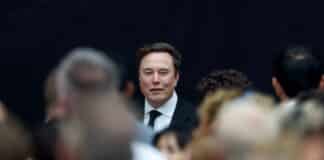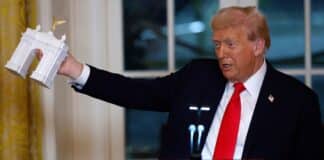North Korean dictator Kim Jong-un ordered an accelerated buildup of nuclear weapons on Monday, using annual U.S.-South Korea joint military drills as justification. Speaking at the launch of the 5,000-ton destroyer Choe Hyon, Kim labeled the Ulchi Freedom Shield exercises an “obvious expression” of Washington and Seoul’s “will to provoke war.”
The Choe Hyon, launched at North Korea’s western port of Nampo, is expected to be operational by 2026 and reportedly capable of carrying nuclear missiles. It is the second destroyer of its class, following the Kang Kon, which suffered significant damage during a failed launch in May. Kim personally witnessed the incident and publicly condemned it as a “serious accident and criminal act” caused by “absolute carelessness.”
A third destroyer is currently under construction. Kim claimed that once all three are in service, they will reinforce North Korea’s nuclear navy and support its broader nuclear strategy. He said the security environment requires “a radical and swift change in the existing military theory and practice” and a “rapid expansion of nuclearization.”
The statement follows Kim’s abandonment of peaceful reunification with South Korea. In 2024, he revised North Korea’s constitution to declare Seoul a “permanent enemy” and destroyed monuments promoting unity between the two Koreas. Kim’s nuclear posturing now aligns with that hardened stance.
This year’s Ulchi Freedom Shield drills—held annually by the U.S. and South Korea—were scaled back slightly by South Korea’s liberal president, Lee Jae-myung, in a gesture aimed at reducing tensions. However, Kim denounced the exercises as even more provocative due to their supposed “nuclear elements,” a claim unsupported by any factual component of the drills.
South Korean and American officials reiterated that the exercises are defensive in nature. The U.S. has not included nuclear simulation in this year’s exercise and has not rehearsed responses to a North Korean nuclear strike. Nonetheless, Kim continues to frame every joint exercise as an existential threat.
Experts suggest Kim’s field appearance at the destroyer launch, instead of a missile test, signals a lower-level response than in previous years. Still, by showcasing new naval capabilities, Pyongyang is sending a clear warning. Lim Eul-chul of Kyungnam University noted that Pyongyang leverages even non-nuclear drills to justify expanding its nuclear arsenal.
Estimates suggest North Korea possesses around 50 nuclear warheads and enough fissile material to construct dozens more. Kim’s order to ramp up production indicates his intent to increase that number substantially.
President Trump is scheduled to meet South Korean President Lee in Washington on August 25. Defense cooperation will be a central topic. President Trump’s advisers have said the U.S. may request that South Korea increase its defense contributions, and a reduction in American troop presence is under consideration.





